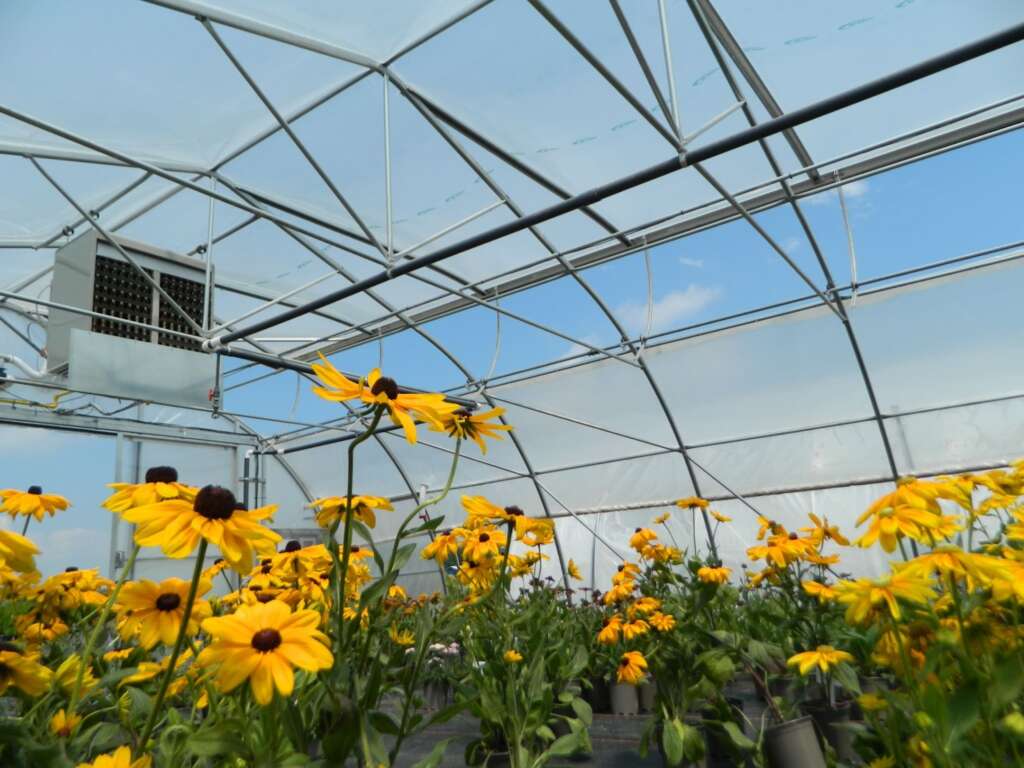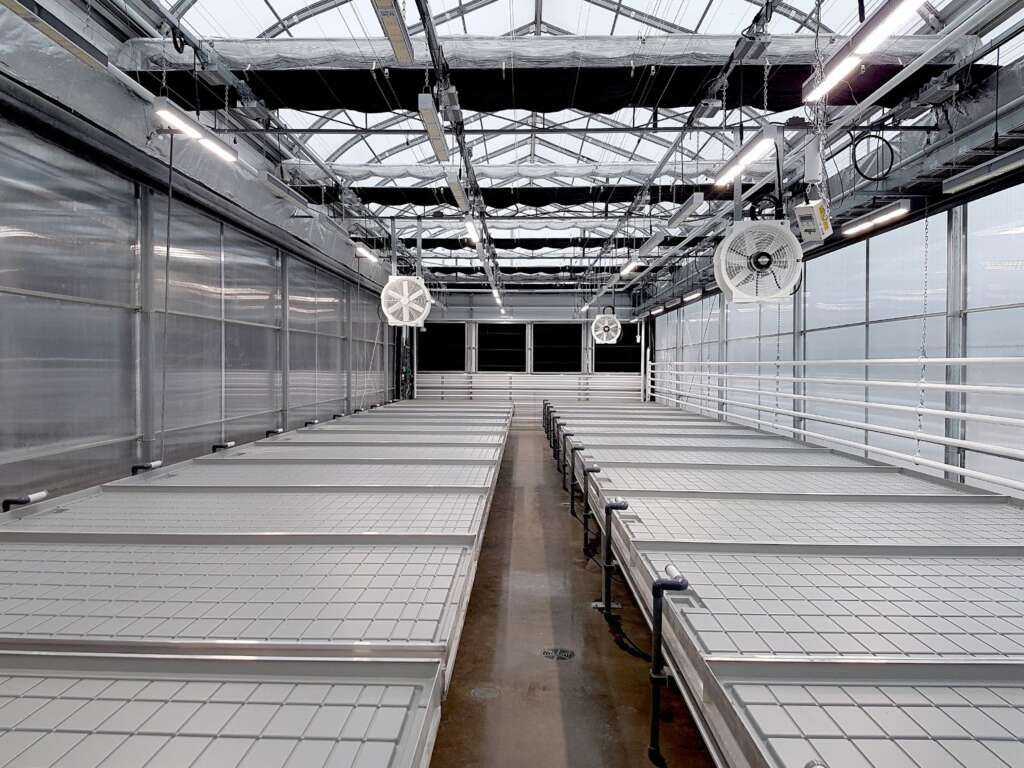In terms of controlled agricultureand controlled environment agriculture (CEA), a greenhouse is more than just a structure—it’s an investment in the future of your farm, facility, or research institution. But how do you measure whether that investment is paying off?
Return on Investment (ROI) in greenhouse farminggoes far beyond simple profit margins. It involves tracking key metrics, aligning production with goals, and optimizing systems for both short- and long-term gains. Whether you’re managing a large-scale commercial grow, an institutional research facility, or a specialty crop operation greenhouse, understanding your ROI can help you make smarter decisions, attract investors, and scale with confidence.
At GGS Structures, we’ve helped growers across North America design and build high-performance greenhouses tailored for maximum efficiency. In this blog, we’ll break down how to evaluate greenhouse ROI and what success truly looks like in thecontrolled agricultureindustry.
What Is Greenhouse ROI?
ROI, or Return on Investment, is a performance metric used to evaluate the profitability of an investment. In the context of a greenhouse, ROI represents the financial return generated from your greenhouse compared to the cost of building and operating it.
The formula is simple:
ROI = (Net Profit / Total Investment Cost) x 100
But in reality, greenhouse farmingROI is influenced by a wide range of factors, from your crop selection and climate control systems to energy usage and labor efficiency. Measuring success means looking at both the quantitative (financial) and qualitative (operational) outcomes of your operation greenhouseinvestment.
Core Factors That Affect Greenhouse ROI
1. Crop Yield and Quality
High yields are great, but quality is just as important, especially if you’re growing for niche or premium markets like cannabis, leafy greens, or floriculture. Controlled agriculturegives you the tools to manage lighting, temperature, humidity, and CO₂, resulting in consistent, high-quality output. Tracking your average yield per square foot and your crop loss rates over time is a direct indicator of success in greenhouse farming.
2. Energy Efficiency
Heating, cooling, and lighting account for a significant portion of operation greenhousecosts. Energy-efficient systems, such asthermal curtains, LED grow lights, or heat retention technologies, can dramatically improve ROI. Many growers overlook the impact of design decisions, like roof shape or venting systems, on energy use, but these elements play a big role in long-term operational costs.
3. Labor Efficiency
Labor is one of the most expensive ongoing costs in any grow operation. The layout of your greenhouse should support streamlined workflow, from planting and irrigation to harvesting and (depending on your operation) shipping. Implementing automation (rolling benches, irrigation booms, etc.) can reduce the time and labor required for daily tasks, freeing up your team to focus on higher-value work.
4. Water Use and Resource Management
Efficient irrigation systemsand water recycling methods can help lower utility costs and reduce environmental impact, two important metrics for ROI and sustainability. Water savings also help your facility comply with increasing environmental regulations and can be a key differentiator when applying for grants or certifications.
5. Market Access and Pricing
Sometimes the success of your greenhouse isn’t just about what you grow, but who you grow it for. A well-located facility with access to high-value markets can improve pricing, reduce shipping costs, and expand customer reach. Whether you’re supplying grocery chains, pharmaceutical buyers, or local CSA programs, the proximity and consistency of your supply chain can significantly influence profitability. This makes greenhouse farmingnot just about production but also about aligning with the right markets for long-term ROI.

How to Track ROI in Practice
1. Benchmark Your Performance
Before you can improve, you need to understand where you are. Start by benchmarking your key metrics: yield per square foot, energy cost per unit, labor hours per crop cycle, etc. Use a consistent tracking system so you can identify trends, make informed decisions and see improvements over time.
2. Use ROI Modeling Tools
Many growers now use greenhouse ROI calculators or software platforms that allow them to simulate different variables, like changing crops, switching to LEDs, or adding automation, to see how these changes would affect profitability. GGS can work with you or your consultants to build a custom ROI model based on your facility’s specs.
3. Monitor Seasonal and Annual Performance
ROI isn’t a one-season metric. Greenhouses are long-term investments, so it’s important to evaluate success over multiple years and make data driven decisions. This allows for variables like seasonality, crop rotation, market fluctuation, and equipment wear.
Measuring Success Beyond the Dollars
While financial returns are essential, there are also non-monetary success metricsthat matter, especially for long-term stability.
1. Sustainability Metrics
Tracking water usage, energy consumption, and waste reduction can help you qualify for grants, certifications, or green labels that appeal to today’s eco-conscious consumers.
2. Scalability
A successful greenhouse investment should lay the groundwork for future growth. Is your current infrastructure expandable? Are your systems modular and easy to upgrade? A high ROI greenhouse grows with you.
3. Employee Satisfaction
Labor shortages are affecting ag industries across the board. A well-designed greenhouse, complete with comfortable working conditions, ergonomic workflows, and automation can improve employee retention and morale, which ultimately feeds back into ROI.
Design Decisions That Drive ROI
At GGS Structures, we design greenhouses with ROI in mind from the very beginning. Here are just a few ways our systems help growers maximize returns:
- Custom Engineered Structures:We work with you to ensure the greenhouse fits your crops, climate, and business model.
- Integrated Environmental Controls:Our structures support seamless integration with advanced climate, lighting, and irrigation systems.
- Automation-Friendly Layouts:We plan for smooth workflows to reduce labor time and accommodate mechanized systems.
- Durability:Our materials and construction practices are built to last, reducing long-term maintenance costs and unplanned downtime.

Final Thoughts
A greenhouse is a serious investment but one with incredible potential for return. By carefully tracking both financial and operational success metrics, and partnering with a greenhouse builder who understands the nuances ofcontrolled agriculture, you can turn that investment into long-term profitability and impact.
At GGS, we believe that a successful operation greenhouseis one that meets your goals, whether that’s yield, efficiency, quality, or sustainability. If you’re looking to increase ROI in greenhouse farmingor planning a new build, our team is ready to help you engineer a smarter solution.
Ready to grow your returns?Contact us today to start planning your high-ROI greenhouse.

